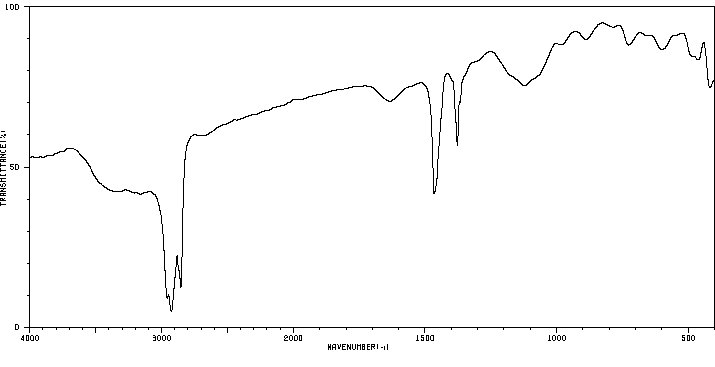硫化亚铁 | 1317-37-9
中文名称
硫化亚铁
中文别名
硫化铁(II);硫化铁
英文名称
Ferrous sulfide
英文别名
sulfanylideneiron
CAS
1317-37-9;12063-27-3
化学式
FeS
mdl
——
分子量
87.91
InChiKey
MBMLMWLHJBBADN-UHFFFAOYSA-N
BEILSTEIN
——
EINECS
——
-
物化性质
-
计算性质
-
ADMET
-
安全信息
-
SDS
-
制备方法与用途
-
上下游信息
-
文献信息
-
表征谱图
-
同类化合物
-
相关功能分类
-
相关结构分类
物化性质
-
熔点:1195 °C
-
沸点:decomposes [HAW93]
-
密度:4.84 g/mL at 25 °C(lit.)
-
溶解度:不溶于水;与酸溶液发生反应
-
颜色/状态:Colorless hexagonal crystals when pure; usually gray to brownish-black lumps, rods or granular powder; trimorphic with transition points @ 135 and 325 °C
-
稳定性/保质期:
Oxidized by moist air to sulfur and iron oxide.
-
分解:When heated to decomposition it emits toxic fumes of /sulfur oxides/.
计算性质
-
辛醇/水分配系数(LogP):0.65
-
重原子数:2
-
可旋转键数:0
-
环数:0.0
-
sp3杂化的碳原子比例:0.0
-
拓扑面积:32.1
-
氢给体数:0
-
氢受体数:1
ADMET
毒理性
保持呼吸道通畅,必要时协助通气。积极使用静脉晶体液治疗由出血性胃肠炎引起的休克,并在需要时输血。由于胃肠道丢失和液体进入肠壁和间质空间的第三间隙,患者常常出现明显的低血容量。如果出现昏迷、癫痫和代谢性酸中毒,则进行治疗。对于严重中毒受害者(例如,休克、严重酸中毒和/或血清铁> 500-600 mcg/dL),给予去铁胺。监测尿液,以发现特征性的橙色或粉红色去铁胺-铁复合物。当尿液恢复正常或血清铁水平降至正常范围时,可以停止治疗。长期使用去铁胺与成人呼吸窘迫综合征和耶尔森菌血症有关。
Maintain an open airway and assist ventilation if necessary. Treat shock caused by hemorrhagic gastrointestinitis aggressively with intravenous crystalloid fluids, and replace blood if needed. Patients are often markedly hypovolemic owing to gastrointestinal losses and third spacing of fluids into the intestinal wall and interstitial space. Treat coma, seizures, and metabolic acidosis if they occur. For seriously intoxicated victims (eg, shock, severe acidosis, and/or serum iron > 500-600 mcg/dL) administer deferoxamine. Monitor the urine for the urine for the characteristic orange or pink deferoxamine-iron complex. Therapy may be stopped when the urine returns to normal or when the serum iron level decreases to the normal range. Prolonged deferoxamine has been associated with adult respiratory distress syndrome and Yersinia sepsis.
来源:Hazardous Substances Data Bank (HSDB)
毒理性
活性炭无效。不建议使用吐根糖浆,因为它可能加剧铁剂引起的胃肠道刺激,并干扰整个肠道冲洗。如果产品是液体配方或片剂被嚼碎,考虑洗胃。不要使用含磷酸盐的溶液进行灌洗;这可能导致生命威胁性的高钠血症、高磷血症和低钙血症。碳酸氢盐和去铁胺灌洗的效果值得怀疑。去铁胺灌洗无效,可能增强铁的吸收。整个肠道冲洗对于吞入的片剂非常有效,可以被视为一线治疗方法,特别是如果普通腹部X光片上可见大量片剂。大量摄入可能导致凝结物或团块。重复或长时间的整个肠道冲洗可能移除片剂。内窥镜检查或外科胃切开术很少需要。
Activated charcoal is not effective. Ipecac is not recommended, because it can aggravate iron-induced gastrointestinal irritation and interfere with whole bowel irrigation. Consider gastric lavage if product was a liquid formulation or tablets were chewed. Do-not use phosphate-containing solutions for lavage; these may result in life-threatening hypernatremia, hyperphosphatemia, and hypocalcemia. Bicarbonate and deferoxamine lavage are of doubtful efficacy. Deferoxamine lavage is not effective and may enhance iron absorption. Whole-bowel irrigation is very effective for ingested tablets and may be considered first-line treatment, especially if large numbers of tablets are visible on plain abdominal x-ray. Massive ingestions may lead to concretions or bezoars. Repeated or prolonged whole-bowel irrigation may remove tablets. Endoscopy or surgical gastrotomy is rarely required.
来源:Hazardous Substances Data Bank (HSDB)
毒理性
Hemodialysis and hemoperfusion are not effective for removing iron but may be necessary to remove iron-deferoxamine complex in patients with renal failure. Exchange transfusion is occasionally used for massive pediatric ingestions but is of questionable efficacy.
来源:Hazardous Substances Data Bank (HSDB)
毒理性
基本治疗:建立专利气道。如有必要,进行吸痰。观察呼吸不足的迹象,如有必要,协助通气。通过非循环呼吸面罩以10至15升/分钟的速度给予氧气。监测休克并视需要进行治疗……。对于眼睛污染,立即用水冲洗眼睛。在运输过程中,用生理盐水连续冲洗每只眼睛……。不要使用催吐剂。对于摄入,如果患者能够吞咽,有强烈的呕吐反射,且不流口水,则用水冲洗口腔,并给予5毫升/千克,最多200毫升的水进行稀释。/铁及其相关化合物/
Basic treatment: Establish a patent airway. Suction if necessary. Watch for signs of respiratory insufficiency and assist ventilations if necessary. Administer oxygen by nonrebreather mask at 10 to 15 L/min. Monitor for shock and treat if necessary ... . For eye contamination, flush eyes immediately with water. Irrigate each eye continuously with normal saline during transport ... . Do not use emetics. For ingestion, rinse mouth and administer 5 ml/kg up to 200 ml of water for dilution if the patient can swallow, has a strong gag reflex, and does not drool. /Iron and related compounds/
来源:Hazardous Substances Data Bank (HSDB)
毒理性
高级治疗:对于失去意识的患者,考虑进行口咽或鼻咽气管插管以控制气道。监测心率和必要时治疗心律失常。开始静脉输液,使用乳酸钠林格氏液/生理盐水:为了保持开放,最低流量。注意液体过载的迹象。对于伴有低血容量迹象的低血压,谨慎给予液体。注意液体过载的迹象。使用丙美卡因氢氯化物协助眼部冲洗。/铁及其相关化合物/
Advanced treatment: Consider orotracheal or nasotracheal intubation for airway control in the patient who is unconscious. Monitor cardiac rhythm and treat arrhythmias if necessary ... . Start an IV with lactated Ringer's /SRP: "To keep open", minimal flow rate/. Watch for signs of fluid overload. For hypotension with signs of hypovolemia, administer fluid cautiously. Watch for signs of fluid overload ... . Use proparacaine hydrochloride to assist eye irrigation ... . /Iron and related compounds/
来源:Hazardous Substances Data Bank (HSDB)
安全信息
-
TSCA:Yes
-
危险等级:4.1
-
危险品标志:N
-
安全说明:S60,S61
-
危险类别码:R31,R50
-
WGK Germany:3
-
海关编码:28309011
-
危险品运输编号:UN 3077
-
危险类别:4.1
-
包装等级:III
SDS
制备方法与用途
硫铁化合物
**硫化亚铁**是一种由硫和铁两种元素形成的化合物。它通常呈现为暗褐色或黑色的块状结晶或颗粒,大块硫化亚铁具有金属光泽。其相对密度约为4.74,熔点在1193~1199℃之间。硫化亚铁不溶于氨,难溶于水,却能溶解于稀酸,并释放出有毒的硫化氢气体。在潮湿空气中,它会被缓慢氧化成四氧化三铁和硫磺。
晶体结构:在其晶体结构中,硫原子以六方密堆积形式存在,而每个铁原子位于六个硫原子构成的八面体中心,同时,六个以三方棱柱顶角位置的铁原子包围着一个硫原子。铁、硫原子配位数均为6,原子个数比为1:1。
制备方法:硫化亚铁可在2价铁盐中加入碱金属硫化物而得到。工业上通常采用将铁屑和硫磺粉混合后在高真空石英封管内进行高温反应来制取。实验室中,主要用其制取硫化氢气体,用于分析试剂;而在工业应用方面,则主要用于陶瓷、油漆及颜料的制造,并可用于制备其他亚铁盐。
化学反应:在高温下,硫化亚铁可被氧气或臭氧氧化成铁的氧化物或硫酸盐,同时也能通过碳或金属锰还原成单质铁。此外,它还能溶于不同的酸性溶液中:
具体反应方程式如下:
- 4FeS + 6H + 6 O4 = 2Fe 2(SO4)3 + 3N2O3 + 4S↓+9H2O
- FeS + 6H = Fe(NO3)3 + O4 + 3NO + 2H2O
- 2FeS + 10 O4(浓) = Fe2(SO4)3 + 9SO2 + 10H2O
- FeS+ O4(稀) = FeSO4 + H2S
- FeS+ 2HCl=FeCl2+
硫化亚铁与盐类或氧化物的反应:这类物质在化学反应中表现出多样性和复杂性。
制备方法通常通过将铁和硫在高真空石英封管内共熔(1000℃)而得,或者将可溶性硫化物加入到中性或碱性亚铁盐溶液中来制备硫化亚铁。
鸡蛋不宜久煮鸡蛋含有丰富的营养成分,煮食是最简单且能较好保持其营养价值的方法。然而,要确保煮出来的鸡蛋既软硬适中又不夹生,则需掌握好火候和时间。如果长时间煮制,蛋黄中的亚铁离子会与蛋白中的硫离子结合生成硫化亚铁。而这种物质难以被人体吸收利用,从而降低鸡蛋的营养价值。
用途反应信息
-
作为反应物:描述:硫化亚铁 生成 Oxido(oxo)iron;oxoiron;oxoiron(1+)参考文献:名称:CARTER, SCOTT D.;RUBEL, AURORA M., AMER. INST. CHEM. SUMMER NAT. MEET., DENVER, COLO, AUG. 21-24, 1988, S. L+摘要:DOI:
-
作为产物:参考文献:名称:MA, ROBERT P.;FELDER, RICHARD M.;FERRELL, JAMES K., IND. AND ENG. CHEM. RES., 28,(1989) N, C. 27-33摘要:DOI:
-
作为试剂:描述:6-decylaniline 、 3-硝基苯磺酸水合物 、 硫酸 、 硼酸 在 硫化亚铁 sodium hydroxide 、 乙醚 、 水 、 Sodium sulfate-III 、 silica gel 作用下, 以 甘油 、 水 为溶剂, 反应 6.0h, 以to obtain 2.0 g of 6-decylquinoline的产率得到6-decylquinoline参考文献:名称:Mesomorphic compound, liquid crystal composition containing the摘要:一种由式(I)表示的含有喹啉-2,6-二基骨架的介向化合物,适用于液晶组合物的组分,可提供改善的响应特性和高对比度。通过在一对电极板之间放置液晶组合物来构成液晶器件。该液晶器件可以作为显示面板,构成提供良好显示特性的液晶装置。公开号:US05695684A1
文献信息
-
Preparation of an alkaline iron electrode material using sulfur acids申请人:Westinghouse Electric Corporation公开号:US03947292A1公开(公告)日:1976-03-30A negative electrode plate, for a battery containing at least one positive and one negative electrode plate, with alkaline electrolyte contacting the plates, is made by reacting iron oxides contained within the plate volume with at least one sulfur substituted organic acid of the thiolic, dithiolic, dithionic or mercaptocarboxylic type.
-
SAVELYANOV V. P.; DOKUKIN N. I.; SAVELYANOVA R. T., ZH. ORGAN. XIMII, 1980, 16, HO 5, 936-938作者:SAVELYANOV V. P.、 DOKUKIN N. I.、 SAVELYANOVA R. T.DOI:——日期:——
-
RUSTAMOV, M. I.;GUSEINOVA, A. D.;MURADOV, N. Z.;MIRZAYEVA, L. M., PROC. 9TH INT. CONGR. CATALYS., CALGARY, 1988. VOL. 1, OTTAWA,(1988) C. 1+作者:RUSTAMOV, M. I.、GUSEINOVA, A. D.、MURADOV, N. Z.、MIRZAYEVA, L. M.DOI:——日期:——
-
KELLAND, DAVID R.作者:KELLAND, DAVID R.DOI:——日期:——
-
SPIVAK, M. M.;SKOSYREV, N. T.;FEDULOV, I. O., KOMPLEKS. ISPOLZ. MINERAL. SYRYA,(1989) N, S. 86-87作者:SPIVAK, M. M.、SKOSYREV, N. T.、FEDULOV, I. O.DOI:——日期:——
表征谱图
-
氢谱1HNMR
-
质谱MS
-
碳谱13CNMR
-
红外IR
-
拉曼Raman
-
峰位数据
-
峰位匹配
-
表征信息







